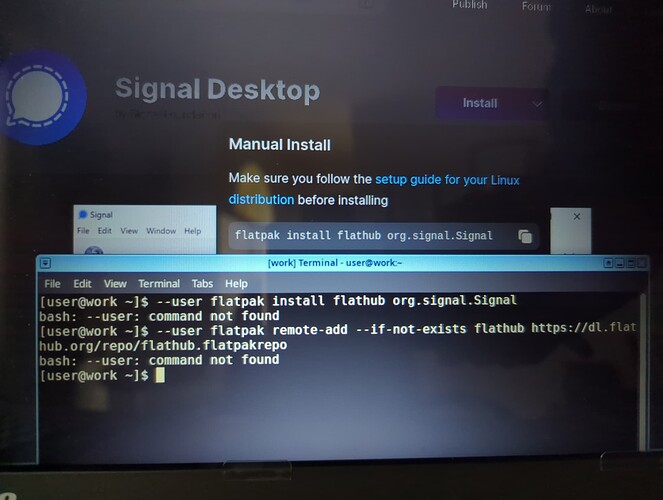I approached installing flatpaks in a different way, Starting with Solene’s list of how to: Solene'% : Flatpak integration in Qubes OS templates
Apparently somethings have changed since Solene wrote this page.
I have documented some of what happened as I tried to follow her path.
I was unsure of what way I should act upon her line, “Install as root.” As root is not normally used in Qubes, Felt she was indicating that I might need to add the word sudo then space. Or she meant her line for those who had added a root password when they first installed Qubes.
My first change from her directions was to create a standalone Qube to work in; based upon the standard Fedora-38-xfce. I did the creation of the standalone from the blue Qube on the upper right hand side of screen.
I again got the error message bash flatpak not found :: so I installed flatpak. sudo dnf install flatpak
I see the message in terminal about – to dom0 hope that all went well.
I got to a point where it said I should have restarted. so I restarted the one Qube. I ran several of Solenes webpage scripts. Despite errors I ran some more to try to get more info. this is what I saw in Terminal
Complete!
[user@fedora38-flatpak ~]$ flatpak remote-add --if-not-exists flathub https://dl.flathub.org/repo/flathub.flatpakrepo
Note that the directories
‘/var/lib/flatpak/exports/share’
‘/home/user/.local/share/flatpak/exports/share’
are not in the search path set by the XDG_DATA_DIRS environment variable, so
applications installed by Flatpak may not appear on your desktop until the
session is restarted.
[user@fedora38-flatpak ~]$
[user@fedora38-flatpak ~]$ mkdir -p /home/user/.config/environment.d/
cat </home/user/.config/environment.d/proxy.conf
https_proxy=http://127.0.0.1:8082/
EOF
[user@fedora38-flatpak ~]$ ip route add default via 127.0.0.2
RTNETLINK answers: Operation not permitted
[user@fedora38-flatpak ~]$
[user@fedora38-flatpak ~]$ #!/bin/sh
when a desktop file is created/removed
- links flatpak .desktop in /usr/share/applications
- remove outdated entries of programs that were removed
- sync the menu with dom0
inotifywait -m -r
-e create,delete,close_write
/var/lib/flatpak/exports/share/applications/ |
while IFS=‘:’ read event
do
find /var/lib/flatpak/exports/share/applications/ -type l -name “*.desktop” | while read line
do
ln -s “$line” /usr/share/applications/
done
find /usr/share/applications/ -xtype l -delete
/etc/qubes/post-install.d/10-qubes-core-agent-appmenus.sh
done
bash: inotifywait: command not found
[user@fedora38-flatpak ~]$
I should add, I am using the hospot on my iPhone 14 Plus with ATT.
in the past ATT has --“protected me”-- from the evil Linux by blocking things.
Is this another instance of that??
